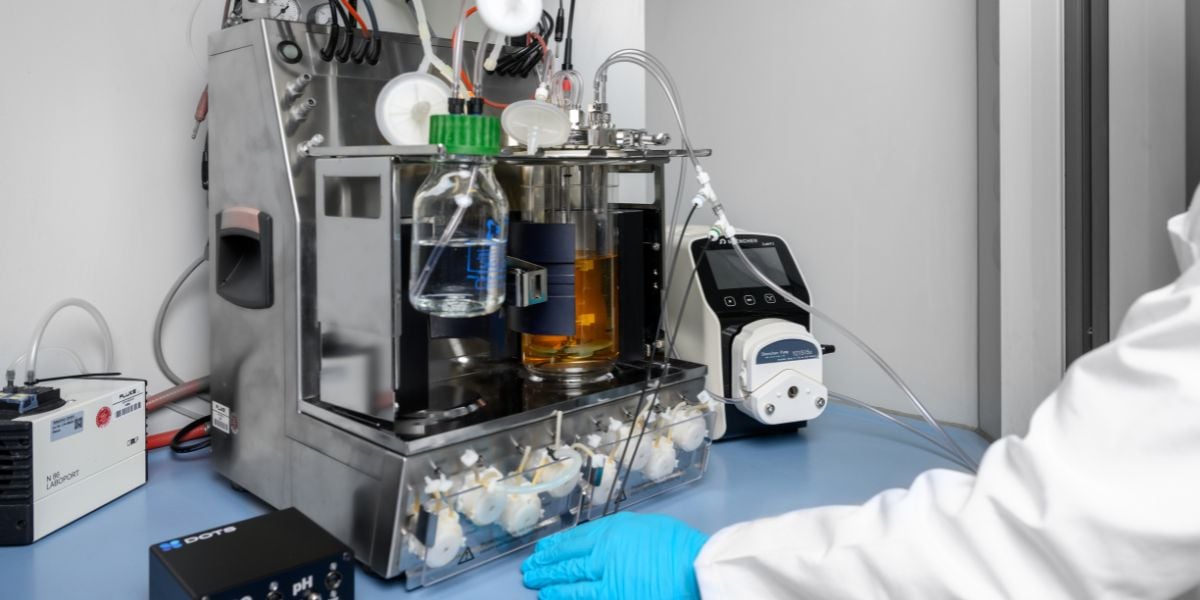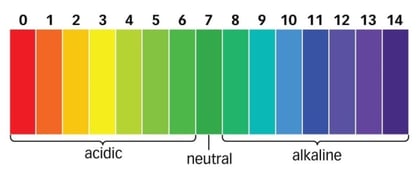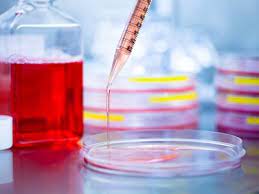pH Monitoring is the Key to Cell Culture

There are a number of important parameters to consider when thinking about the ideal environment for your cell culture. While each parameter plays its own part in the bigger picture of bioprocessing, perhaps the most critical to any process is pH.
What is pH?

In technical terms, pH stands for the "potential of hydrogen" and is the measurement of how acidic or basic (alkaline) a substance is.
It's measured on a scale of 0 to 14, with 7 being neutral. It is also an indication of the overall concentration of hydrogen (H+) ions and is inversely related to pH. The more hydrogen ions present, the lower the pH; conversely, the fewer hydrogen ions, the higher the pH.
What Range Should My pH Be At?
For any bioprocessing workflow, extracellular pH is typically controlled in a very narrow range that is best suited for those cells.
Most cells, mammalian included, are kept between a pH value of 7.2 to 7.4. While this is the norm for most cells, these ideal values can vary depending on the cell type. For example, transformed cells, those that have been genetically altered, tend to prefer slightly lower pH values of 7.0 while unaltered fibroblast cell lines do better at slightly alkaline pH values between 7.4 and 7.7. Insect cells, on the other hand, have an optimum pH of 6.2.
Why Does pH change?
There are several reasons why pH changes may occur in static cultures. Most common are:
- Densely populated cultures can result in the build-up of metabolites.
- Low oxygen levels lends to the production of lactic acid by cells.
- Bacterial or fungal contamination of the culture.
The Importance of Monitoring pH
For those cells hardy enough to maintain intracellular pH ranges such as cancer cells, some deviation outside of the ideal pH range may have little effect on the cell’s functions. However, there have been many studies showing that changes in extracellular pH, even as little as 0.02 pH, can have dramatic consequences, not all negative, for the growth and productivity of one’s cell lines. One study showed that the proliferation capacity of T cells was three times greater when cultured at pH 7.0 and 7.2 cultures compared with pH 7.4 (1). On the other hand, an earlier study decreased the culture pH from 7.6 to 6.8 for hybridoma cells, which resulting in a slower consumption of the carbon source, glucose. With less carbon utilization, cell growth slowed and the production rate of lactate fell (2).
Not only do changes in pH alter the way in which cells metabolize and grow, it can also change the physical structure of the cells themselves. HeLa cells, first incubated with a low pH solution for a shorttime and then grown for 24 hours in culture with normal pH, showed a change in cellular morphology (3). Those exposed to the low pH treatment and an increase in single cells versus the control group, suggesting that low pH had actually stopped the cell cycle at the G1 phase.
Challenges To pH Monitoring
While one must monitor pH for the reasons stated above, it is important to remember that pH can and is influenced by other environmental parameters. Factors that may be introduced during incubation or handling, including temperature, oxygen, and carbon dioxide (CO2), can contribute to pH shifts over time. Even elevation, or how high above sea level you are, can play a role.
 There are ways to reduce these interactions. For example, most cell culture media contain carbonate-based buffers which work with increased carbon dioxide gas levels in the incubator to promote stabilization. Want to learn more about how pH buffered growth media works? Click here.
There are ways to reduce these interactions. For example, most cell culture media contain carbonate-based buffers which work with increased carbon dioxide gas levels in the incubator to promote stabilization. Want to learn more about how pH buffered growth media works? Click here.
Controlled workspaces, such as hypoxia chambers or barrier isolators, can keep cell cultures stable during manipulations. However, what might work well for incubation may not be well suited for handling and these factors could change throughout your workflow.
A second challenge that occurs when trying to monitor pH is uniformity. Within a culture, pH gradients can be produced as cell density increases. One study followed the pH of Chinese hamster fibroblasts in T-flasks (3). After a feeding period of 6 hours, it was found that while the majority of the culture held a pH of 7.6, there were localized patches of pH 6.5. Low levels of agitation can help support spatial heterogeneities in culture systems.
Conclusion
Thanks to technology, modern culture systems make it possible to control pH within a narrow range but this is only achievable through the diligent monitoring of pH and other important parameters. By understanding the particular needs of your cells, you can ensure proper growth and successful yields.
References:
1 Carswell, K. S., & Papoutsakis, E. T. (2000). Extracellular pH affects the proliferation of cultured human T cells and their expression of the interleukin-2 receptor. Journal of immunotherapy (Hagerstown, Md. : 1997), 23(6), 669–674. https://doi.org/10.1097/00002371-200011000-00008
2 Hu, Y. and Li, Y. (2018), Effect of Low pH Treatment on Cell Cycle and Cell Growth. The FASEB Journal, 32: 804.49-804.49. https://doi.org/10.1096/fasebj.2018.32.1_supplement.804.49
3 McQueen, A., Bailey, J.E. Growth inhibition of hybridoma cells by ammonium ion: correlation with effects on intracellular pH. Bioprocess Eng. 6, 49–61 (1990). https://doi.org/10.1007/BF00369278
